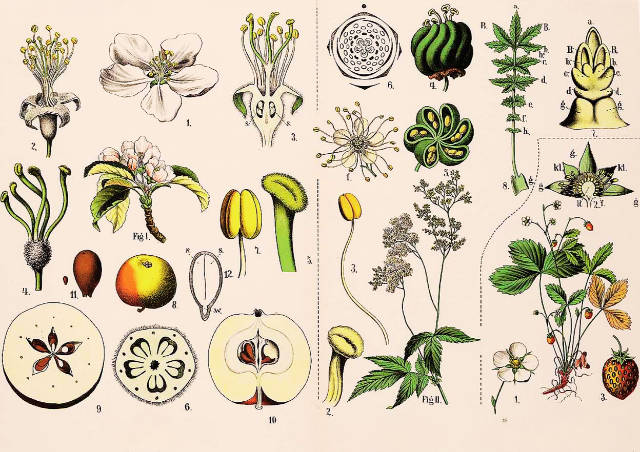In botanical classification, a plant family is a group of related plants with specific features and evolutionary history. Plant families are key classification groups that organize and categorise the Earth’s tremendous plant species diversity.
A plant family usually has several genera (plural of genus), groups of closely related species, with each genus including one or more species. Members of the same plant family frequently have similar morphology (physical qualities), reproductive structures, biochemical properties, and genetic links.
Example of a Plant Family and Genus
The Asteraceae family, also known as the aster, daisy, or sunflower family, include plants such as sunflowers (Helianthus), daisies (Bellis), and dandelions (Taraxacum). These plants have common characteristics such as composite flowers (a flower head of numerous tiny florets), opposing leaves, and bitter-tasting chemicals.
Knowing plant families is essential for botanical classification, identification, and study. It assists scientists in organising and studying plant diversity, deducing evolutionary links, and predicting the characteristics and behaviours of related species based on shared qualities within a family.

A plant family and a plant genus are two distinct levels of taxonomic hierarchy used to categorise and organise plants based on evolutionary ties and similar traits. This is how they differ:
Plant Family:
- A plant family is a higher taxonomic rank that includes a more diverse group of plants.
- It comprises several genera (plural of genus) with similar traits and evolutionary origins.
- Plant families are often named with the suffix “-aceae”. Asteraceae, for example, is the family name for asters, daisies, and sunflowers.
- Although members of the same plant family may differ substantially in appearance, habitat, and other qualities, they share certain overarching properties that keep them together within the family.
Plant Genus:
- A plant genus is a taxonomic rank that groups closely related species.
- It consists of one or more species that are even more similar in shape, reproductive structures, biochemical characteristics, and genetic links.
- Plant genera are often named in capital letters and italicised (or underlined when handwritten). Roses, for example, are classified under the genus Rosa.
- Species within the same genus are more closely related than those in other genera within the same family.
In conclusion, while plant families and plant genera are used to categorise and organise plants, a plant family represents a broader grouping of many genera, whilst a plant genus indicates a more precise grouping of one or more closely related species.
For information on plant classification visit https://www.ars-grin.gov/Collections
A plant’s family, genus, and scientific name have a hierarchical connection.
Plants are classified into families based on their common traits and evolutionary ties. A family may have several genera (plural of genus) with specific characteristics. Rosa (roses), Malus (apples), and Rubus (blackberries) are all genera in the Rosaceae family.
- A genus is a group of closely related species with similar traits. Each genus is unique from other genera in the same family. Rosa rugosa and Rosa chinensis are two examples of rose species in the Rosa genus.
- Species are the most specific taxonomic categories, representing individuals capable of interbreeding and producing fertile offspring. The species name distinguishes one species from another within the same genus. Rosa rugosa and Rosa chinensis are two distinct species under the Rosa genus.
In summary, a plant’s scientific name indicates its genus and species. The genus denotes the larger group to which the plant belongs. In contrast, the species name refers to the specific type of plant within that genus. The genus and species names create a consistent method for identifying and classifying plants based on evolutionary ties and similar traits.
